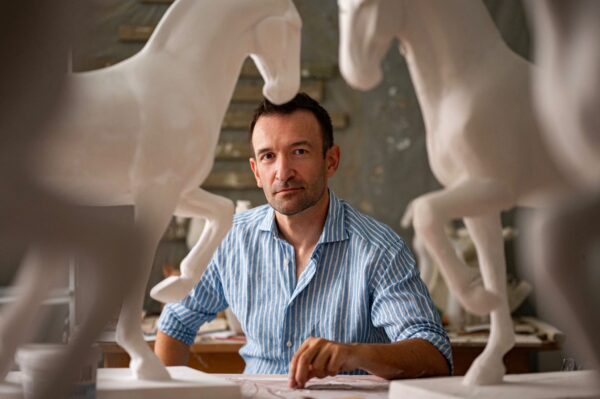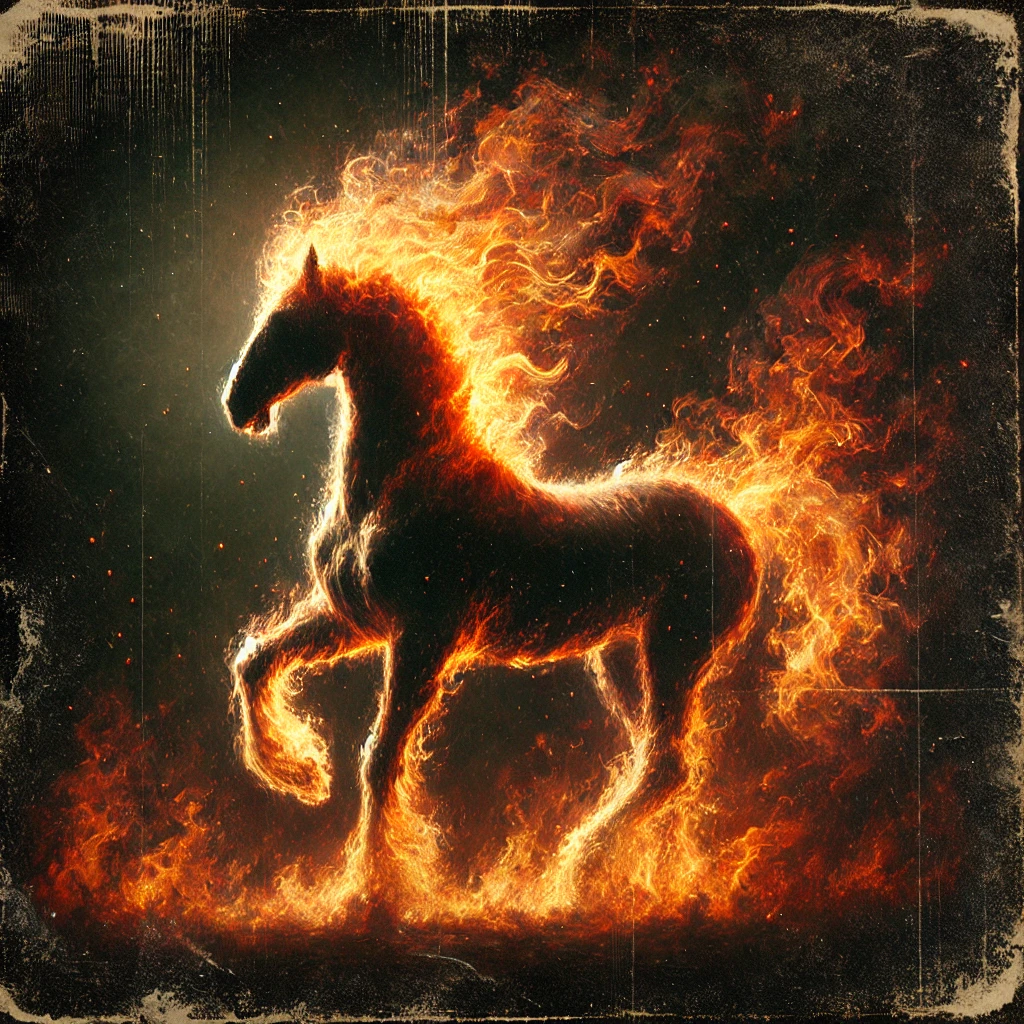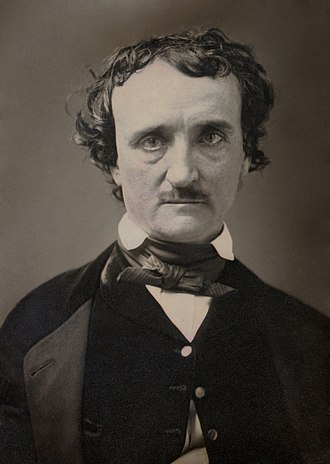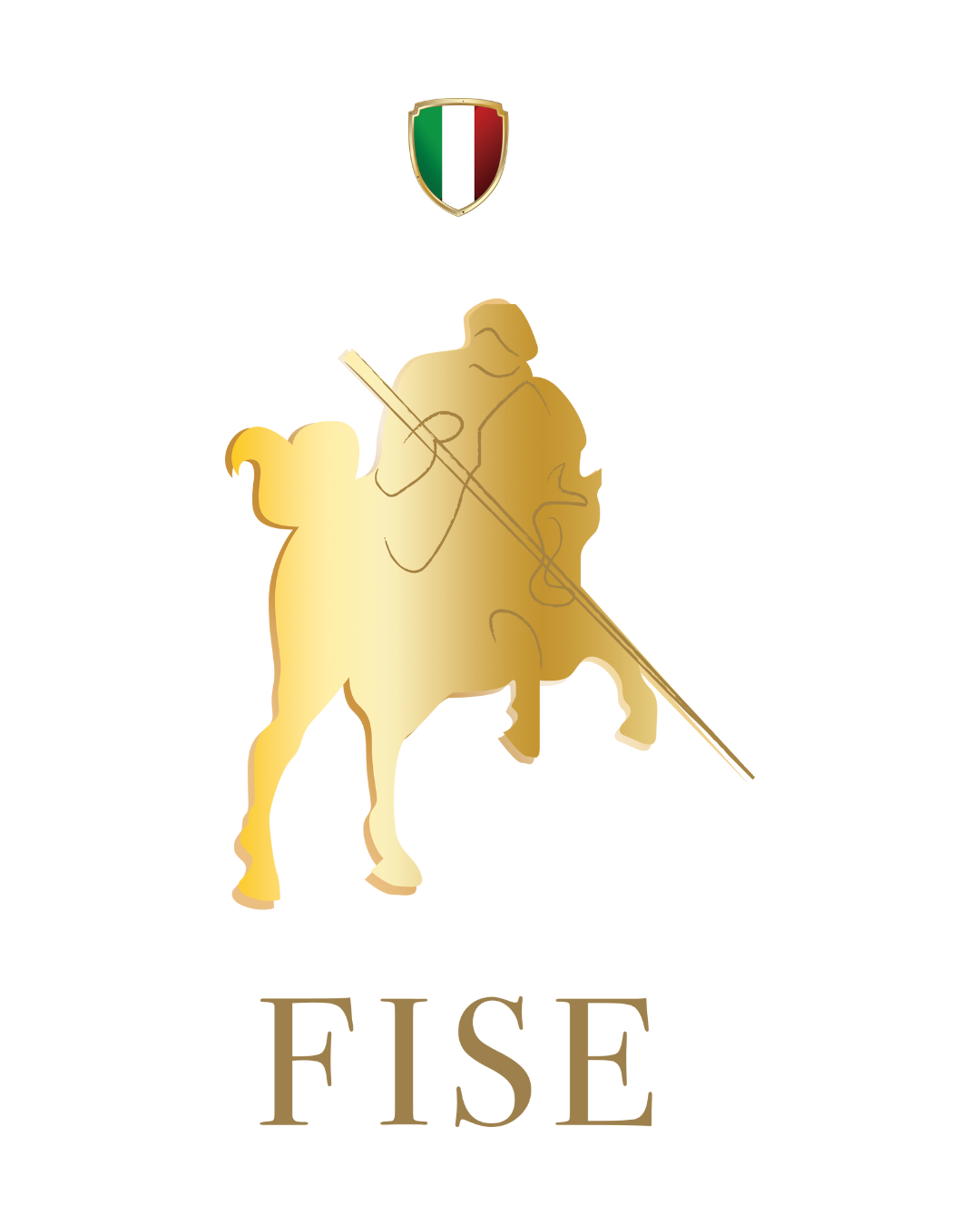
Metzengerstein, Edgar Allan Poe’s Demonic Horse

“The soul is only found once inside a sensitive body. Thus, a horse, a dog, and even a man are nothing but the illusory resemblance of such beings.”
— Quoted in French in the original text, excerpt from the text ‘Metzengerstein’ where Edgar Allan Poe cites Jean de La Bruyère
‘Metzengerstein’ is the first short story by American writer Edgar Allan Poe, first published on January 14, 1832. As the title suggests, the story revolves around the concept of metempsychosis, the reincarnation of souls not only in human beings but also in animals or other forms. In the narrative, Poe depicts this concept through the figure of a spectral horse with the color of fire, and the perverse relationship between the horse and a young aristocrat. The gothic nature and supernatural elements of the story did not receive much consent from critics, but despite this, it marked the beginning of the writer’s literary ambitions.
Plot
The story is set in nineteenth-century Europe, and stands in the background of a rivalry between two Hungarian noble families, the Metzengerstein and Berlifitzing. For centuries, hatred and rancor had divided the two families, and many associated these feelings with the words of an ancient prophecy: “A great name will fall with a terrible thud when the mortality of Metzengerstein triumphs like the knight on his horse of the immortality of Berlifitzing.”
One day, the protagonist Fredrick Metzengerstein, a young aristocrat who inherited the family estate, sits to observe an old tapestry. In the painting, he sees a member of his house killing someone from the rival house, whose body lies on his horse. The young man, with a vengeful and petty nature, is enchanted by the image of the animal, symbolizing the grim victory. However, the moment is interrupted by some pages who inform the baron of the death of the heir of he rival family, William Von Berlifitzing, due to a fire that broke out in the stables of his estate. The only survivor appears to be a gigantic horse with a fiery color and the letters WVB branded on its forehead, with no one claiming ownership. Young Metzengerstein decides to keep the animal and tame it, thinking of stealing it from the enemy family because of the initials it bears. Over time, the spectral horse becomes an obsession for the baron, worsening his behavior and pushing him into a spiral of madness.
One night, Fredrick is out riding his gloomy steed, when he notices that his castle is engulfed in flames. The horse, possessed by a demonic force, no longer responds to his will, throwing itself into the fire with the young man, the last man to carry the name of the Metzengerstein dynasty. Shortly afterward, the story finishes with a cloud of smoke hovering over the entire estate: it has the shape of a horse.

Themes of Metzengerstein and the Symbolism of the Horse
From the beginning of the story, Poe introduces the theme of metempsychosis and the element of the horse. In the first part of Metzengerstein, the author explains Hungarian beliefs and superstitions (the protagonist’s people) through a quote from the French writer Jean de La Bruyère: “The soul is only found once inside a sensitive body. Thus, a horse, a dog, and even a man are nothing but the illusory resemblance of such beings.” With this thought, Poe outlines the metaphor upon which the entire story is based upon. The image of the horse, which in the story seems to possess supernatural qualities, becomes a symbol of the connection between life and death, and the passage of time. The psychological deterioration of the protagonist, Frederick Metzengerstein, and his descent into madness, begin and end with the figure of the horse, which also conveys the theme of fate and revenge. In fact, it is not the young baron who possesses the animal, but rather the animal that possesses him, predestined to steal his soul and life. This gothic scenario, along with Poe’s exploration of the human soul, foreshadows many elements that he would later use in his subsequent stories.
Edgar Allan Poe: Turbulent and Cursed Life

Edgar Allan Poe was born in Boston in 1809, son of traveling actors. His father, an alcoholic, disappeared shortly after his birth, and his mother died in Richmond, Virginia, before his third birthday. Poe became part of the family of John Allan, a wealthy local merchant. After spending five years in England with his foster parents, he returned to America, where he enrolled in the prestigious University of Virginia. Despite excelling in the studies of ancient and modern languages, young Poe led a life immersed in gambling and alcohol. He quarreled with his foster father, who excluded him from the will and expelled him from the university after only one year.
At the age of eighteen, Poe left his adoptive home to enlist at the United States Military Academy at West Point, from which he was dismissed after a short period for neglecting his duties in favor of literature. By the time he completed his service, he had already written two collections of poetry. Due to financial difficulties, Poe moved in with his aunt in Boston, where he began working as an editor and had the opportunity to launch his literary career. At the age of twenty-seven, he married his thirteen-year-old cousin Virginia, who was suffering from tuberculosis and died of the disease in 1847. After her death, the writer fell into a state of severe depression, succumbing to drugs and alcohol. He died in Baltimore in 1849 under mysterious circumstances.
Edgar Allan Poe was considered immoral and controversial by his contemporaries, and his literary value was only recognized after his death. The suffering and loneliness linked to his ‘cursed’ life marked the entirety of his work.
Literary Theories and Works
Edgar Allan Poe was one of the most important figures in American literature, a pioneer of gothic and detective fiction, and the father of the modern crime novel. A writer, poet, and literary critic, he became famous for his tales of terror, which reflect not only the suffering of the author but also his literary theory. Among these stories are ‘The Black Cat’ and ‘The Masque of the Red Death’. In 1838, he published his only novel, ‘The Narrative of Arthur Gordon Pym’, and two years later, his first collection of short stories, ‘Tales of the Grotesque and Arabesque’.
Poe believed that poetry was superior to prose, and most of his stories were short, confined to a limited time, and based on “a certain unique and singular effect.” This idea was meant to deepen the emotional impact on the reader, as was his writing method, where he began with the conclusion and worked backward. He displayed these theories in literary criticism works like ‘The Philosophy of Composition’ (1846) and ‘The Poetic Principle’ (1850).
Following this thinking, the writer considered himself primarily a poet and only secondarily a short story author, originally published to serve as a source of financial support. With the poem ‘The Raven’, published in ‘The Raven and Other Poems’ in 1845, Poe achieved such a high success that he earned the nickname of ‘Mr. Raven.’
Ludovica Locatelli
Source: Introduzione di Julian Symmons, Il Pozzo e il Pendolo e altri racconti, Edgar Allan Poe; The Cambridge Companion to Edgar Allan Poe, edited by Kevin J.Hayes
© Rights Reserved.





.png)












